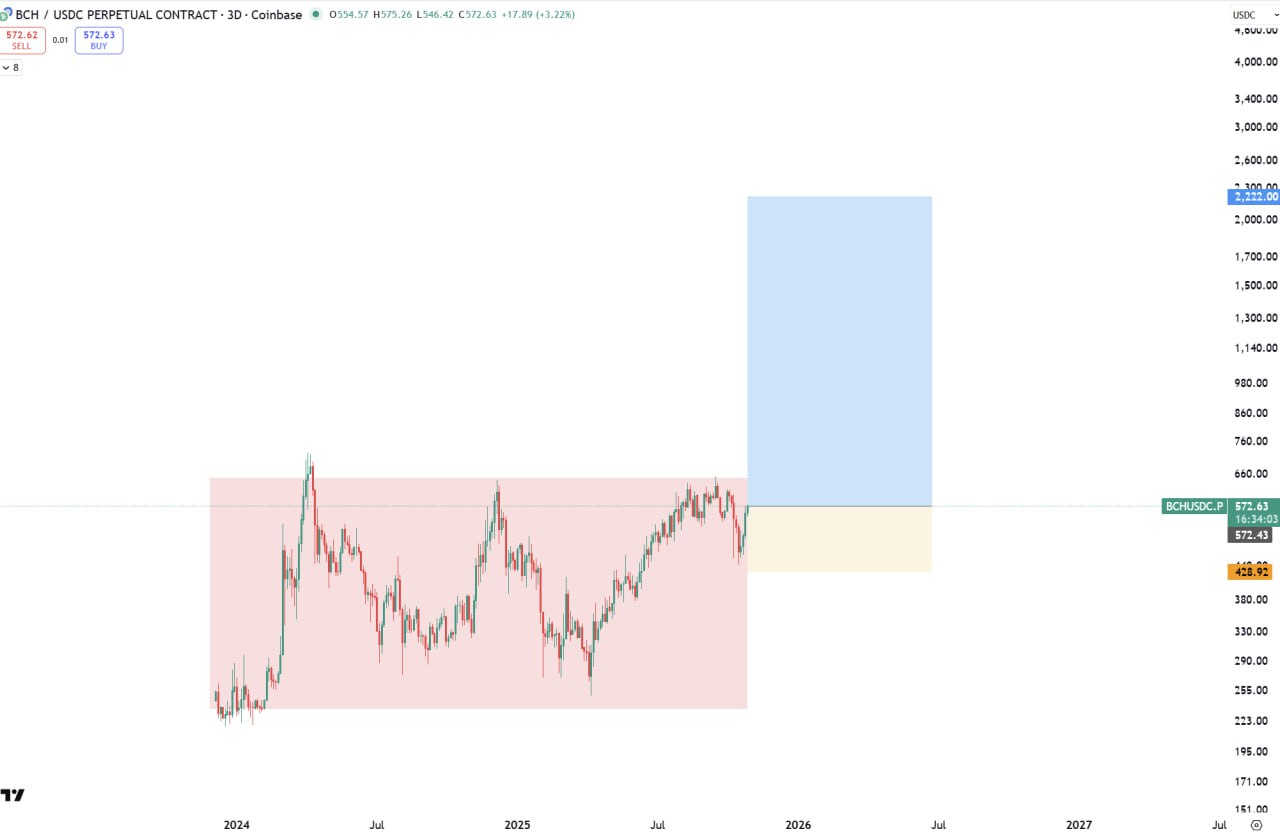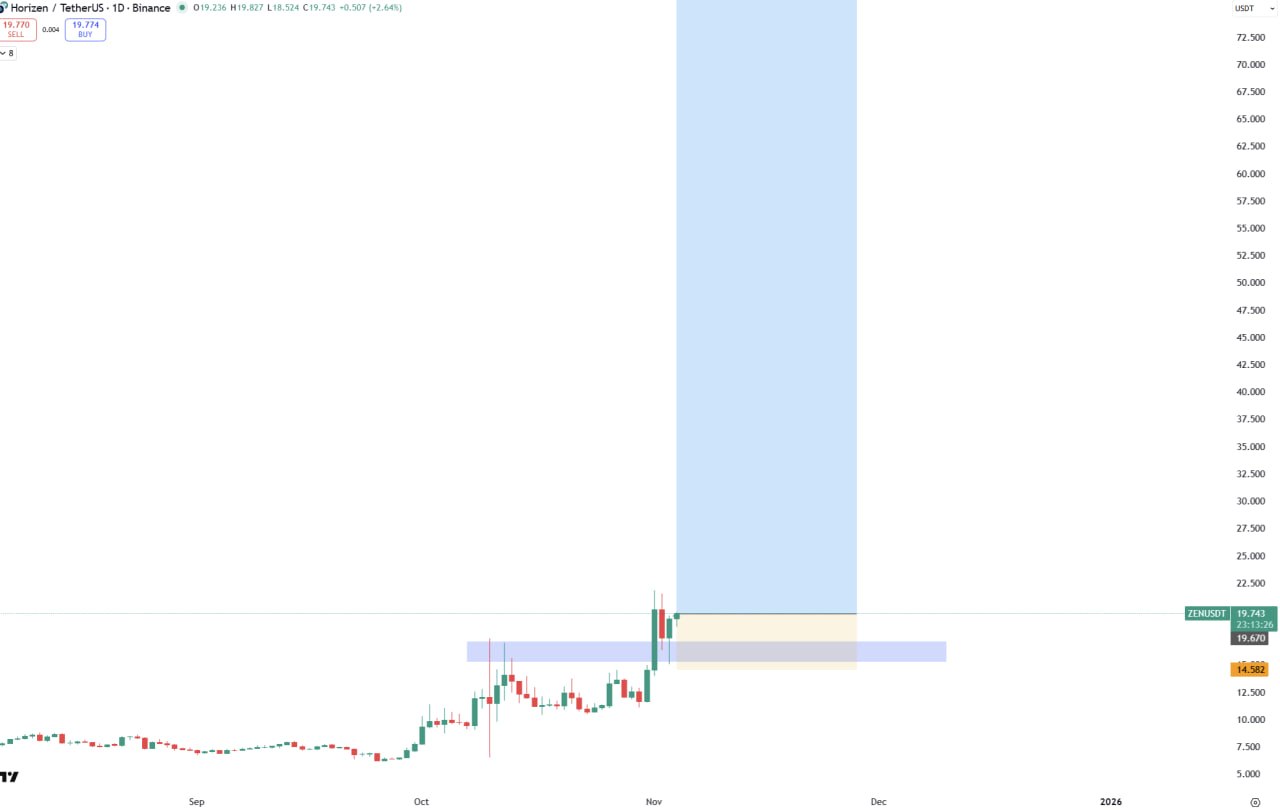BCH/USDT.P — Long
2025-10-30 02:15
Long BCH at 542.6 with staggered targets 550 | 565 | 600 and a hard invalidation at 428.9.

If the TradingView symbol is unavailable, use the annotated image as reference for target zones & invalidation.
BCH/USDT.P Long Trade Signal — October 30, 2025
This signal proposes a long exposure in Bitcoin Cash (BCH) around 542.6, aiming to monetize a continuation structure that has been carving higher highs and higher lows on the 4H and daily timeframes. The trade makes tactical use of tiered take-profits at 550, 565, and 600 to pay risk early and keep a runner should momentum extend. The hard stoploss rests at 428.9, far enough to avoid routine noise but close enough to constrain loss if the thesis fails.
Market Context
Across large-cap crypto, risk-taking has become more selective: capital is rotating toward assets showing clean market structure and sufficient depth to absorb size without excessive slippage. BCH fits that profile in this window. While narratives around payments, exchange integrations, and miner economics ebb and flow, what matters tactically is that breadth (number of advancing names) has improved and intraday pullbacks have been bought rather than sold. On higher timeframes, BCH remains sensitive to Bitcoin’s directional bias; however, recent intraday divergences suggest idiosyncratic flows are active—likely a mix of speculative accounts and systematic strategies that respond to volatility contraction/expansion cycles.
In periods when macro headlines inject noise, focusing on the tape often outperforms macro guesswork. For BCH specifically, the last impulse leg was accompanied by rising spot participation and modest perpetual funding, a combination that typically supports trend persistence. Spreads on major venues have tightened during liquid hours, implying that market makers are comfortable warehousing inventory, which reduces the chance of stop-driven whipsaws around obvious levels.
Technical Analysis
Structure: The pair completed a multi-day accumulation between ~480 and ~520, then broke out with acceptance above prior supply in the 530s. The breakout has not been rejected on closing basis, and pullbacks are holding the breakout shelf, creating a classic setup for a measured leg toward intermediate resistance.
- Trend: D1 uptrend reasserted after a series of higher lows; 4H shows constructive stair-step structure.
- Momentum: Momentum indicators are confirming trend without flashing major divergences on the 4H; minor divergences intraday have been resolved by shallow consolidations.
- Volume: Breakout sessions printed expanding volume relative to the 20-session average; consolidation volume compressed, a healthy signature if follow-through emerges.
- Liquidity: Visible resting liquidity clusters populate the mid-550s and near 600; sweeping those zones can catalyze rapid pushes as stops and passive orders interact.
Key Levels
- Entry: 542.6 (discretionary scale-in 538–546 if spread permits)
- Targets: 550 → 565 → 600
- Stoploss: 428.9 (hard invalidation, not a mental stop)
- Support zones: 532–536 (breakout shelf), 505–512 (secondary support), 480 (deep support/structure failure if lost)
- Resistance zones: 555–566 (supply), 590–605 (round-number magnet and mid-timeframe resistance)
Playbook
- Initiate near 542.6 after verifying that pullbacks respect the breakout shelf on a closing basis.
- Take first profits around 550 to reduce risk of a full round-trip if supply reacts.
- Scale out another tranche near 565 if momentum slows or if funding becomes one-sided; trail remainder toward 600.
- Once the first target pays, consider advancing a protective stop to just below reclaimed support to lock partial gains.
Failure Signatures
Fast rejection from 550 accompanied by rising open interest and negative delta (supply overwhelming dip-bids) argues for patience; repeated closes back inside the 520s would signal a failed breakout and elevate the odds of a deeper mean reversion toward 505–512. A daily close below 480 would invalidate the swing thesis entirely, which is why the hard stop is placed before that scenario compounds.
Risk Management
Allocate modest risk per this idea—treat it as one trade within a diversified campaign, not a hill to die on. Define a fixed R (risk unit) as the distance from entry to stop adjusted for size; size down if volatility expands beyond your comfort. After the first target is hit, trail using structure (e.g., last higher low on the 1H/4H) rather than a fixed tick count; structure-based trailing respects the trend's breathing room.
- Do not average down below invalidation. If the stop triggers, exit and reassess only after structure rebuilds.
- Beware of liquidity vacuums around session opens and major data releases; either preemptively trim or widen your trailing methodology to avoid noise stops.
- Use limit orders where possible to reduce slippage; market orders into thin books can distort your average price.
- Maintain a daily loss cap (e.g., −2R) to prevent emotional spiral; one disciplined day beats a heroic comeback attempt.
Educational material only. Not investment advice. Perpetual futures carry significant risk including liquidation. Trade size and stops are your responsibility.








